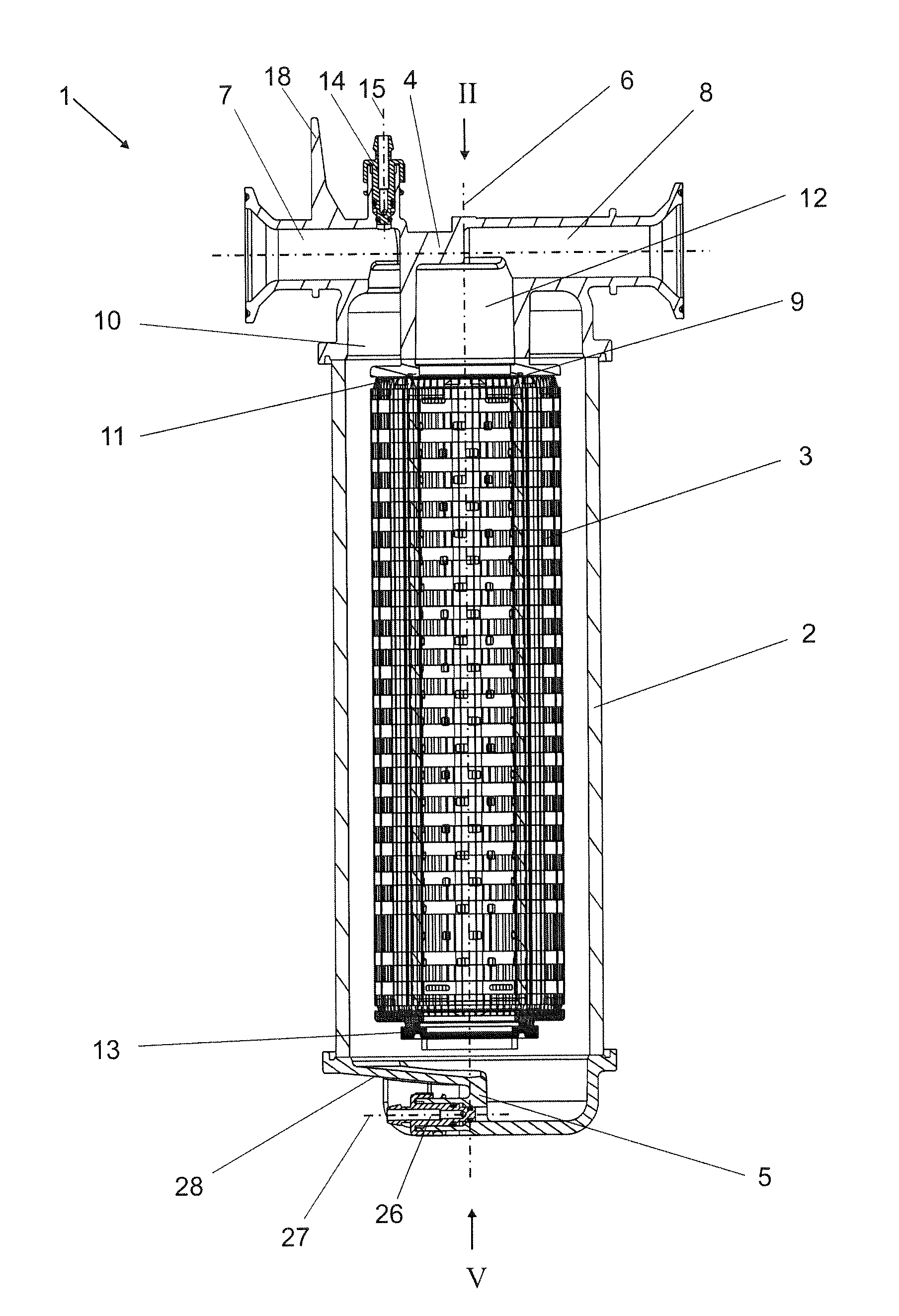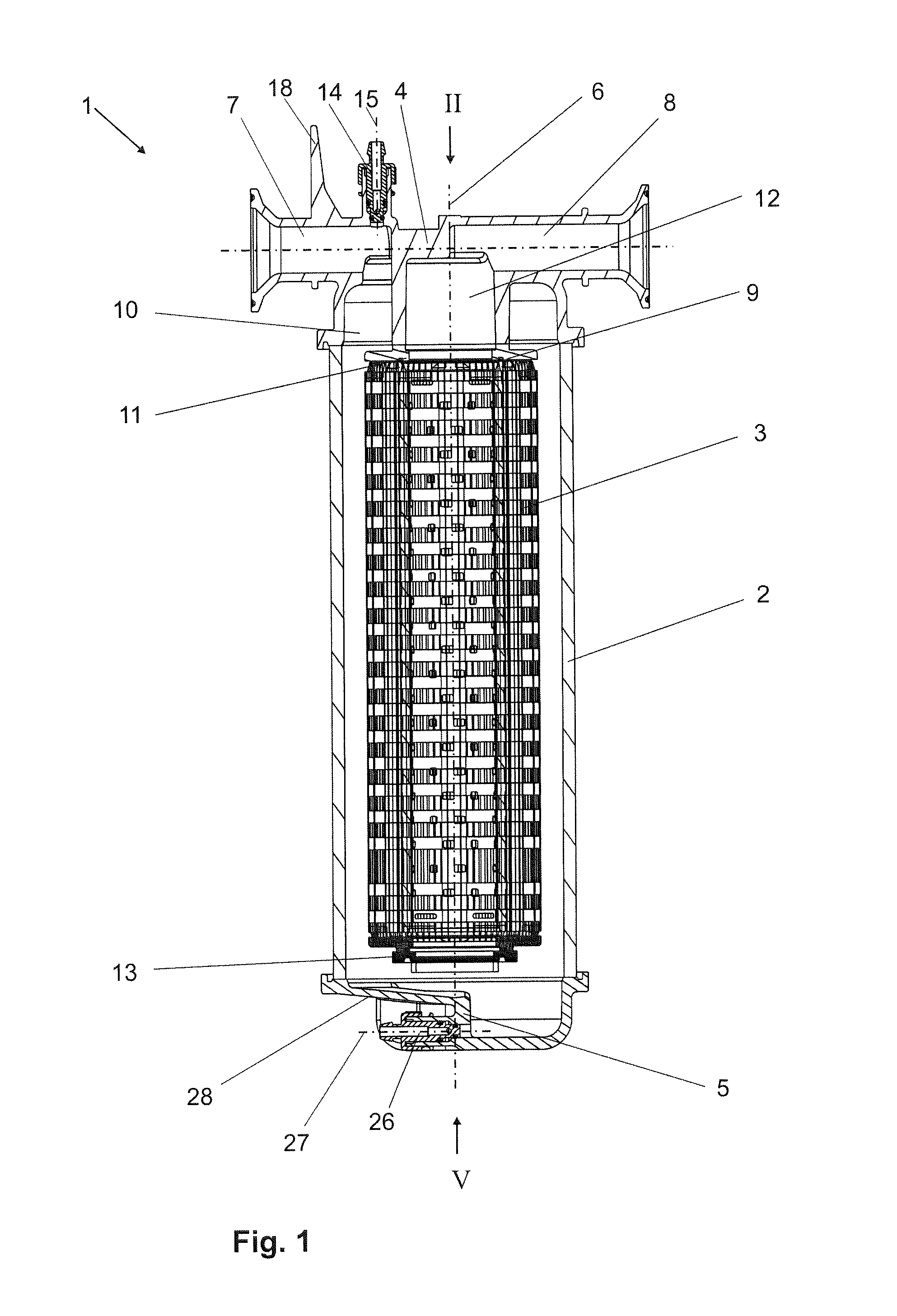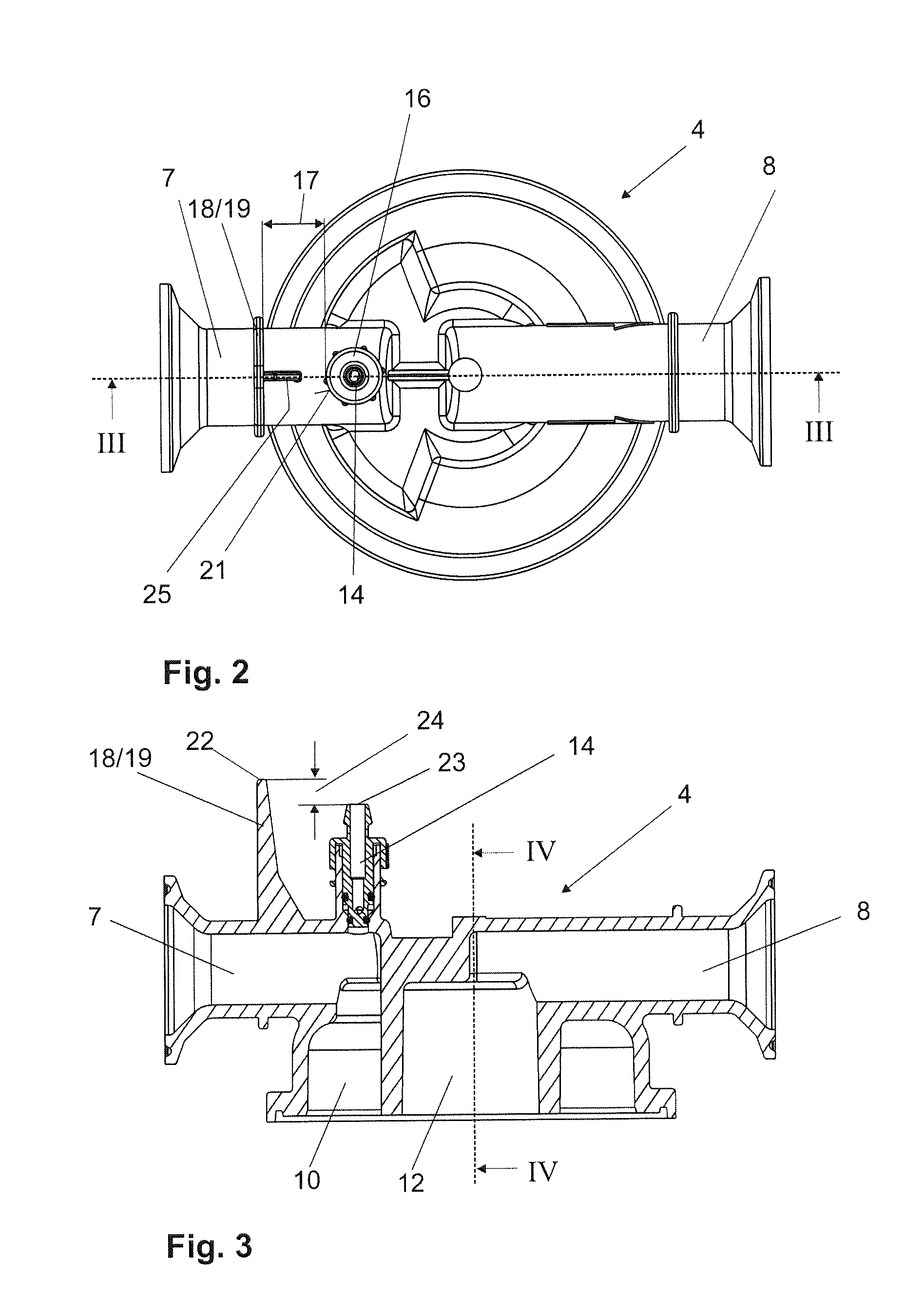Filter capsule
- Summary
- Abstract
- Description
- Claims
- Application Information
AI Technical Summary
Benefits of technology
Problems solved by technology
Method used
Image
Examples
Embodiment Construction
[0027]A filter capsule for filtering liquid media is identified generally by the numeral 1 in FIG. 1. The filter capsule 1 is composed principally of a filter housing 2 with a filter 3, a first end cap 4 and a second end cap 5.
[0028]The first end cap 4 has a housing inlet 7 and a housing outlet 8 transverse to the longitudinal axis 6 of the filter housing 2.
[0029]The filter 3 is secured with its first end 9 on the first end cap 4, in this example by welding. A non-filtrate chamber 10 is arranged between the filter 3 and the filter housing 2 and is connected to the housing inlet 7. The filter 3 has an inner tube 11 with an interior that forms a filtrate chamber 12, which is connected to the housing outlet 8. The filter housing 2 has a second end directed away from the first end cap 4 and the second end cap 5 is at the second end of the filter housing 2. The filter 3 has a closed, free end 13 arranged at a distance from the second end cap 5.
[0030]The first end cap 4 has an air release...
PUM
| Property | Measurement | Unit |
|---|---|---|
| Width | aaaaa | aaaaa |
| Circumference | aaaaa | aaaaa |
Abstract
Description
Claims
Application Information
 Login to View More
Login to View More - R&D
- Intellectual Property
- Life Sciences
- Materials
- Tech Scout
- Unparalleled Data Quality
- Higher Quality Content
- 60% Fewer Hallucinations
Browse by: Latest US Patents, China's latest patents, Technical Efficacy Thesaurus, Application Domain, Technology Topic, Popular Technical Reports.
© 2025 PatSnap. All rights reserved.Legal|Privacy policy|Modern Slavery Act Transparency Statement|Sitemap|About US| Contact US: help@patsnap.com



